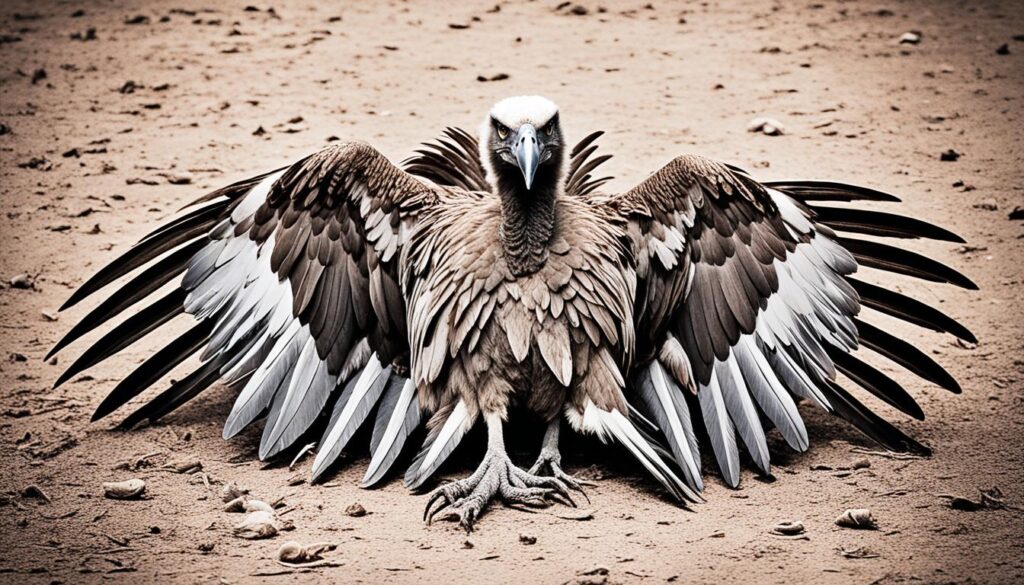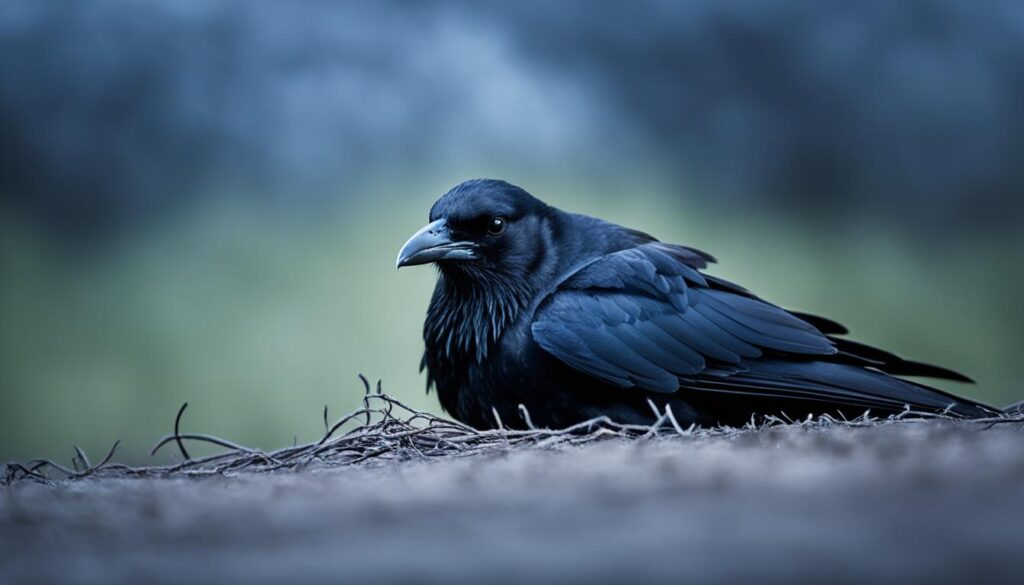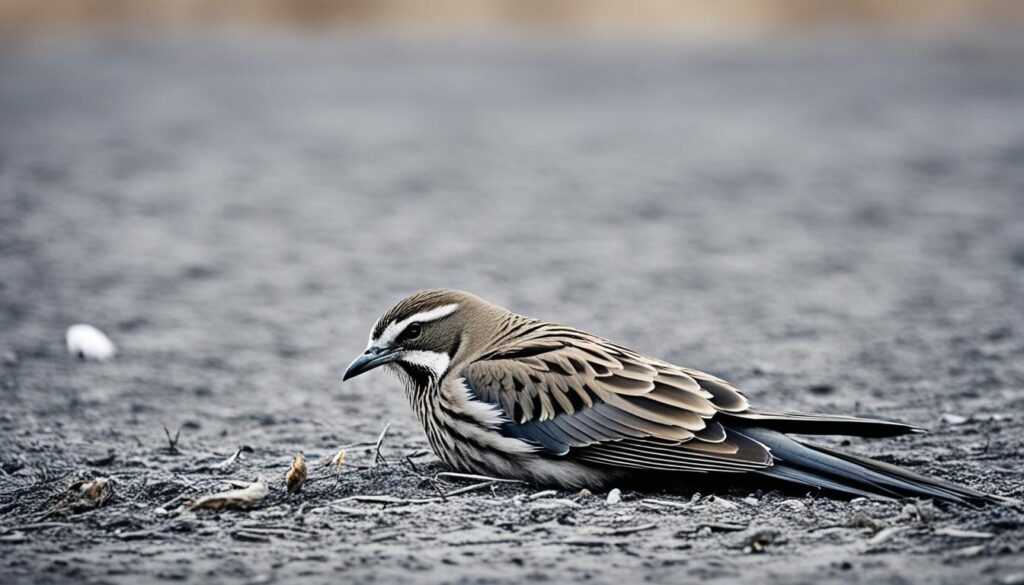According to various cultural beliefs, encountering a dead bird can be seen as an ominous sign, often associated with death. However, the sighting of a dead bird often carries deep symbolic and spiritual significance across diverse cultures and belief systems. This article will explore the meaning and symbolism behind seeing dead birds, delving into the cultural, historical, and religious interpretations of this intriguing phenomenon.
Key Takeaways
- Seeing a dead bird can be interpreted as a sign of change, renewal, or impending negative events.
- Different types of dead birds hold unique symbolic meanings, such as an eagle’s death signifying a warning of future downfall.
- Dead birds are often used in the Bible as metaphors for spiritual decay, divine judgment, and the need for atonement.
- Cultural and regional beliefs, as well as Native American and Asian traditions, offer varied perspectives on the significance of dead bird sightings.
- Understanding the symbolic meaning of dead birds can provide insights into personal growth, confronting negative emotions, and embracing transformation.
Introduction to Bird Symbolism and Superstitions
Birds have long held a prominent place in human cultures, mythology, and spiritual beliefs. They are often viewed as messengers, guardians, or representations of higher powers. Throughout history, the sighting of certain birds has been associated with various omens, superstitions, and symbolic meanings.
Cultural Significance of Birds
Across different civilizations, birds have been revered for their unique attributes and abilities. For instance, the bald eagle has been a symbol of freedom and strength in the United States since 1782. The owl is a symbol of wisdom nationwide, while the turkey represents family and thankfulness in American symbolism. The white dove is a universal symbol of peace.
In other cultures, birds hold equally significant meaning. In China, the rooster is considered lucky and is part of the Chinese zodiac. Cranes are symbols of wisdom and longevity, while magpies are harbingers of good news. In Africa, the African fish eagle is believed to have the power to bring rain, and the blue crane symbolizes good fortune and protection.
Historical Beliefs and Omens Surrounding Birds
Throughout history, the appearance or behavior of certain birds has been interpreted as omens or signs of impending events. For example, in some cultures, the presence of a dead bird on one’s doorstep is believed to signify a curse or impending misfortune. Conversely, the appearance of a dead pigeon in South America is seen as a sign of new beginnings and transformation.
Similarly, various superstitions surrounding dead birds exist, such as a bird flying into a home and dying indicating impending death, or a bird dying in one’s hand representing bad luck. In Native American culture, dead pigeons were viewed as symbols of completed journeys on earth and peace, as well as symbols of love and devotion.
The rich symbolism and cultural significance of birds continue to captivate people across the globe, offering insights into the deep and enduring connections between the avian world and human experiences.
Spiritual Meaning of Seeing Dead Birds
The sight of a dead bird can carry profound spiritual significance, often serving as a metaphor for endings, transitions, and new beginnings. In many belief systems, the death of a bird is not merely a physical occurrence but a symbol of transformation, the conclusion of a cycle, and the potential for growth and renewal.
Death as a Metaphor for Endings and New Beginnings
The spiritual meaning behind encountering dead birds can be interpreted as a metaphor for personal, emotional, or spiritual changes. The death of a bird can symbolize the end of a chapter in one’s life, signaling the need to let go of the past and embrace new opportunities. This powerful symbolism encourages introspection and the recognition that every ending paves the way for a fresh start.
In the Bible, dead birds are mentioned in several instances, such as the use of dead birds in the cleansing process for leprosy in Leviticus 14:7 and the reminder that God cares for even the smallest details, like a sparrow falling. These references suggest that the spiritual meaning of dead birds can serve as a reminder of our mortality and the need to surrender to a higher power.
“Are not two sparrows sold for a penny? Yet not one of them will fall to the ground outside your Father’s care.” – Matthew 10:29
Across various cultures and traditions, the sight of dead birds is often interpreted as a warning sign, indicating that something negative or dangerous may be on the horizon. However, the symbolism can also signify themes of rebirth, renewal, and the shedding of old ways to make room for new beginnings or personal growth.

Whether the dead bird represents the end of a cycle or the start of a new one, the spiritual meaning behind this encounter encourages individuals to reflect on their journey, release what no longer serves them, and embrace the transformative power of change.
Common Interpretations of Dead Bird Sightings
When individuals come across a dead bird, they often seek to understand the potential meaning or message behind the sighting. There are numerous common interpretations and symbolic associations tied to dead bird sightings, which can vary depending on cultural, regional, and personal beliefs.
In Chinese culture, dead birds are often seen as symbols of good luck or fortune when found in pairs. Conversely, in certain cultures, a dead bird is considered an omen of bad luck. However, in ancient Greece, dead birds were thought to be signs of good luck and were often depicted in art.
The sighting of three dead birds together has a deeper symbolic meaning, possibly representing an end or significant change in a job, friendship, or partnership. Alternatively, three dead birds may also symbolize transformation and renewal after tough times.
The sighting of a dead baby bird often carries connotations of lost potential or a premature end to new beginnings. Different interpretations of dead bird symbolism exist, with as many as 15 different meanings and symbolisms associated with seeing a dead bird.
Some common interpretations include symbolism representing endings or loss, a warning for the future, or a spiritual significance as a message from the spirit world. In certain cultures, a dead bird may also be seen as a sign of good luck, especially in areas like hunting or relationships.
The type of bird that died can also influence the symbolism, with different implications for various species. For instance, common birds like sparrows and robins may symbolize a general message of change or endings, while doves or pigeons are often seen as symbols of peace and love, with a dead dove representing lost peace or a reminder to cherish loved ones.
“The sighting of a dead bird can serve as a warning sign to pay attention to important things.”
Ultimately, the interpretation of a dead bird sighting is highly personal and can be influenced by an individual’s cultural background, spiritual beliefs, and life experiences. Understanding the common symbolism and superstitions surrounding dead bird encounters can provide insight into the potential meaning or message behind these sightings.
What Does Seeing Dead Birds Mean?
The symbolism and meaning behind seeing a dead bird can be greatly influenced by the specific species of the bird. Each bird carries its own unique attributes, characteristics, and cultural associations, which can shape the interpretation of the sighting. Let’s explore the symbolism and interpretations associated with various common bird species when encountered in their deceased state.
Decoding the Symbolism Based on Species
The presence of a dead bird might indicate new beginnings and renewal in certain contexts. Encountering a dead bird on your path could imply that after a misfortune or loss, better things are on the horizon. Similarly, a bird flying into a window can suggest an upcoming obstacle in life, leading to new prospects once the obstacle is overcome.
Specific bird types might carry unique messages; for instance, a catbird signifies communication with tact and self-expression. Dead birds could symbolize the end of a cycle or pattern in life, hinting at upcoming changes. The death of a bird may signify the end of something in order to make room for a new beginning, or it could indicate the end of a search or seeking, suggesting that the quest is over.
The context of the encounter with a dead bird is crucial in understanding its symbolic meaning. Different cultures and traditions have attached diverse spiritual interpretations to seeing a dead bird. The spiritual meaning behind a dead bird varies based on factors like the bird’s species, the location where it was found, and the context surrounding the situation.

“A dead bird is often seen as a symbolic message from the spiritual realm, representing various meanings such as the ending of a phase or situation in one’s life, the need for renewal and rebirth, or a call to pay attention to spiritual signs.”
Dead birds can symbolize transformation, communication from the spiritual or divine realm, moments of clarity and enlightenment, and a reminder of the interconnectedness of all life forms. Encountering a dead bird can serve as an opportunity for self-reflection and growth, urging individuals to seek deeper meaning in life events and embrace natural cycles of beginnings and endings.
Dead Eagle Symbolism
Eagles are majestic creatures that are often associated with power, authority, and royalty. The death of an eagle can signify the loss of these qualities or a potential downfall. If you come across a dead eagle, it may serve as a warning of a future decline in status, fame, or the potential loss of prized possessions.
The Bald Eagle is the national bird of the United States of America, symbolizing strength, freedom, and patriotism. Golden Eagles are symbolic of communication, inspiration, and optimism. Eagles are recognized symbols of hope, resilience, and determination in various cultures around the world.
In Roman culture, the eagle was a symbol of strength and courage, featured prominently on military standards and coins. Eagles are associated with positive qualities such as bravery, courage, and freedom in many cultures and beliefs. In Egyptian mythology, the eagle symbolized hope and protection, while in various Native American traditions, eagles are seen as messengers between the earthly and spiritual realms.
Eagles are commonly seen as symbols of foresight in different cultures, reflecting their connection to divinity and spirituality. Eagle tattoos often represent freedom, strength, power, wisdom, spirituality, and masculinity. Tribal eagle tattoos frequently symbolize strength, power, and spiritual wisdom, while patriotic eagle tattoos are used to show pride in one’s country. A tattoo of an eagle feather may symbolize healing and spirituality or a person’s connection to nature.
Seeing a dead eagle can be a powerful omen, signifying the loss of personal power, freedom, or the potential for a significant change in one’s life. Dream interpretation statistics indicate that dreaming of a dead eagle commonly symbolizes physical health issues related to eyesight rather than expressive difficulties. Cultural interpretations suggest that a dead eagle in a dream can signify the loss of power, freedom, or personal growth, and may serve as a warning or a call for transformation, indicating a need for change and reassessment in various aspects of life.
Dead Vulture Symbolism
Vultures are fascinating birds that play a vital role in maintaining the health of our ecosystems. These scavengers, known for their distinctive appearance and behavior, are often associated with death and transformation. The death of a vulture can hold profound symbolic meaning, inviting us to confront the negative emotions and feelings we may have been avoiding or suppressing.
Vultures are commonly linked to the process of death and renewal. They feed on the flesh of the deceased, symbolizing the cycle of life and the inevitable transitions we all must face. The sight of a dead vulture can serve as a reminder to address the inner turmoils and shadows within ourselves, allowing for personal growth and the embrace of new beginnings.
These birds demonstrate remarkable patience and adaptability, qualities that can inspire us to navigate our own challenges with greater resilience. Vultures are known to wait patiently for other predators to finish their meals before descending to feed, a testament to their respect for the natural order of things. Similarly, confronting our negative emotions with patience and understanding can lead to a deeper sense of clarity and inner peace.
Confronting Negative Emotions
The death of a vulture can symbolize the need to confront the negative emotions and feelings that have been suppressed or ignored. These emotions, if left unaddressed, can fester and consume us from within, hindering our ability to move forward. By facing these shadows head-on, we can begin the process of transformation and renewal, much like the vulture’s role in the cycle of life.
Embracing the symbolism of the dead vulture can be a powerful catalyst for personal growth. It encourages us to delve deep within, to confront the fears, anger, or grief that may have been holding us back. Only by acknowledging and working through these emotions can we truly experience the liberation and rebirth that the vulture represents.
“The death of a vulture can serve as a reminder to address the issues we’ve been avoiding, allowing us to emerge renewed and empowered.”
As we navigate the complex journey of life, the dead vulture can be a powerful symbol, guiding us to confront our negative emotions and embrace the transformative power of change. By embodying the patience and resilience of these remarkable birds, we can find the courage to let go of the past and move towards a brighter, more fulfilling future.

Dead Woodpecker Symbolism
Woodpeckers are renowned for their unwavering dedication, tireless work ethic, and unwavering passion. The sight of a dead woodpecker, however, can carry a profound symbolic meaning. This loss of life may represent the waning of these admirable qualities, signaling a need to reassess one’s path and consider new directions or interests.
Historically, the woodpecker symbolism has been closely tied to the idea of persistence and the pursuit of personal goals. The rhythmic tapping of a woodpecker’s beak against the bark of a tree has long been seen as a metaphor for the unwavering focus and determination required to achieve one’s dreams. The sudden absence of this familiar sound can, therefore, suggest a loss of dedication and passion.
“The dead woodpecker serves as a reminder to reignite the spark within and to approach life’s challenges with renewed vigor and purpose.”
In some cultures, the dead woodpecker symbolism is also associated with the need for introspection and self-examination. The demise of this industrious bird may prompt individuals to reflect on their own priorities, values, and the degree to which they are actively pursuing their aspirations. This can be a catalyst for positive change, encouraging a reevaluation of one’s direction and a recommitment to the pursuit of meaningful goals.
Furthermore, the dead woodpecker symbolism can be interpreted as a call to embrace new opportunities and perspectives. Just as the woodpecker’s absence creates a void, so too can it open the door to fresh possibilities and untapped potential. By recognizing and honoring the dead woodpecker symbolism, individuals may find the courage to step outside their comfort zones and explore new avenues for growth and fulfillment.
Ultimately, the sight of a dead woodpecker serves as a powerful reminder to maintain a steadfast dedication to one’s goals, while also remaining open to the possibilities that may arise from unexpected changes. By embracing the symbolic meaning of this winged creature, individuals can strive to recapture the essence of their own passions and embark on a renewed journey of self-discovery and personal growth.
Dead Crow Symbolism
Crows are complex symbolic creatures, representing both intelligence and loyalty, as well as death and misfortune. The death of a crow can signify the end of troubles and worries, suggesting that a period of relief and resolution is on the horizon. However, it can also serve as a warning of impending darkness or negativity in the future, prompting the need for introspection and preparation.
Interpreting the Symbolism of the Dead Crow
When encountering a dead crow, it’s crucial to consider the context and your own personal experiences. For some, the sight of a dead crow symbolism may indicate that a difficult phase in their life is coming to an end, paving the way for a new beginning. This transition can bring a sense of closure and the opportunity to move forward with a renewed sense of purpose.
On the other hand, the death of a crow may also signal the approach of adversity or misfortune. In this case, the dead crow symbolism serves as a warning, urging individuals to reflect on their current circumstances and prepare for potential challenges ahead. This can inspire a period of introspection and strategic planning to navigate the transition successfully.
Ultimately, the meaning of a dead crow sighting is deeply personal and can vary depending on one’s beliefs, cultural background, and the specific circumstances surrounding the encounter. It’s essential to approach the crow symbolism with an open mind and a willingness to explore its nuanced implications.

“The death of a crow is a powerful omen, signaling the end of one chapter and the beginning of another. It is a reminder to embrace the inevitability of change and to navigate the transition with wisdom and resilience.”
Dead Pigeon Symbolism
Pigeons are often associated with trust, communication, and the pursuit of joy. The death of a pigeon can hold deeper symbolic meaning, potentially indicating a betrayal of trust or a reminder to find a better balance between work and leisure.
In many cultures, pigeons are seen as symbols of peace, loyalty, and the messenger of the gods. Their presence is often welcomed and their cooing is considered a soothing sound. However, the sight of a dead pigeon can disrupt this tranquil imagery, leading to interpretations of betrayal of trust or the need for personal reflection.
The dead pigeon symbolism may signify that someone close to you has broken your trust or that you have neglected your own needs in pursuit of other priorities. It can serve as a wake-up call to reevaluate your relationships and ensure that you are nurturing the connections that are most important to you.
Alternatively, the pigeon symbolism of the dead bird may suggest that it’s time to let go of something in your life that is no longer serving you. This could be a relationship, a job, or a personal habit that has been holding you back from finding true happiness and fulfillment.
“The death of a pigeon can signify the end of a cycle, paving the way for new beginnings and opportunities to emerge.”
Ultimately, the interpretation of a dead pigeon sighting will depend on the individual’s personal circumstances and cultural background. It’s important to approach the symbolism with an open mind and reflect on how the message may be resonating in your own life.
Cultural and Regional Variations in Bird Symbolism
The symbolic meaning and interpretations of dead birds can vary significantly across different cultures and regions. Understanding these cultural nuances is crucial to gaining a comprehensive understanding of the deeper meaning behind encountering deceased birds.
Bird Meanings in Native American Cultures
In Native American traditions, birds often hold great spiritual significance, with each species representing unique qualities and symbolism. The interpretations of dead birds can vary widely among different tribal nations, reflecting the rich diversity of their cultural beliefs and practices.
For many Native American communities, the appearance of a dead bird may be seen as a sign of impending change or a message from the spiritual realm. Some tribes believe that the specific type of bird and its behavior can provide insights into the nature of the message being.
- In certain Navajo beliefs, the sighting of a dead hawk or eagle is often interpreted as a harbinger of personal or tribal conflict, urging the community to address underlying tensions.
- Many Plains tribes, such as the Lakota and Cheyenne, revere the crow as a symbol of wisdom and communication, and the appearance of a dead crow may be seen as a call to listen more attentively to the messages of the natural world.
- The Hopi people of the American Southwest ascribe deep spiritual significance to the woodpecker, and the discovery of a deceased woodpecker may be viewed as a sign to reconnect with one’s ancestral knowledge and traditions.
These are just a few examples of the cultural variations in bird symbolism and regional bird meanings found within Native American cultures. Appreciating these diverse perspectives can enrich our understanding of the profound connections between humans, nature, and the spiritual realm.

“In the Native American worldview, birds are often seen as messengers between the physical and spiritual realms, carrying important teachings and guidance from the ancestors.”
Birds in Greek Mythology and Folklore
The ancient Greeks had a rich and captivating tradition of incorporating birds in greek mythology and folklore. These winged creatures were often seen as divine messengers, symbols of the gods, and representations of various human traits and experiences. The enduring influence of these beliefs on Western culture is undeniable, as the imagery and symbolism of birds continue to be deeply embedded in our collective consciousness.
In Greek mythology, birds were frequently associated with specific deities and their domains. For instance, the majestic eagle was closely linked to Zeus, the king of the gods, symbolizing power, strength, and divine authority. The owl, on the other hand, was the sacred bird of Athena, the goddess of wisdom, and was seen as a symbol of knowledge, intellect, and clear-sightedness.
Beyond their mythological significance, birds in greek folklore also played a crucial role in ancient Greek culture. The flight patterns and behaviors of birds were closely observed and interpreted as omens and portents, providing guidance and insights into the future. The presence of certain avian symbolism in greek culture was often believed to foreshadow important events, whether auspicious or ominous.
“The Greeks saw birds as messengers from the gods, and their flight patterns and calls were carefully observed and interpreted as omens and portents.”
The rich tapestry of birds in greek mythology and folklore has left an indelible mark on Western art, literature, and cultural traditions. From the iconic representation of the phoenix, a mythical bird associated with renewal and rebirth, to the ubiquitous presence of doves as symbols of peace and love, the influence of these winged creatures continues to resonate across time and space.
As we delve deeper into the captivating world of Greek mythology and folklore, the significance of birds becomes increasingly clear. These magnificent creatures were not merely symbols, but powerful embodiments of the divine, the spiritual, and the interconnectedness of all things. Their enduring legacy serves as a testament to the timeless appeal of the natural world and the enduring human fascination with the mysteries of the avian realm.
Birds in Asian Traditions and Beliefs
In the rich tapestry of Asian cultures, birds have long held a prominent place, woven into the fabric of traditions, beliefs, and folklore. From the mystical dragons of China to the sacred cranes of Japan, these winged creatures have captured the imagination of people across the continent, serving as symbols of power, wisdom, and spiritual enlightenment.
Across various Asian traditions, birds are often seen as messengers between the earthly and divine realms, conveying messages from the heavens and guiding the faithful on their spiritual journeys. The birds in Asian beliefs and avian symbolism in Asian cultures are diverse and multifaceted, reflecting the region’s cultural and religious diversity.
“In the Taoist tradition, the crane is revered as a symbol of longevity, immortality, and spiritual transformation. Its graceful flight is seen as a metaphor for the journey of the soul.”
Similarly, in birds in Asian traditions, the peacock is a beloved figure in Hindu and Buddhist art and mythology, representing themes of beauty, pride, and the pursuit of enlightenment. The eagle, on the other hand, is often associated with power, strength, and the ability to soar above earthly concerns.
- In Chinese culture, the phoenix is a mythical bird that symbolizes renewal, prosperity, and the harmonious relationship between heaven and earth.
- In Japanese folklore, the kite is seen as a harbinger of good fortune, its graceful movements believed to bring luck and protection to those who witness its flight.
- In Indian traditions, the parrot is revered as a symbol of devotion, intelligence, and the ability to convey divine messages.
The rich tapestry of bird symbolism in Asian cultures reflects the region’s deep reverence for the natural world and the belief that these winged creatures possess a unique connection to the spiritual realm. By understanding the significance of birds in Asian traditions and beliefs, we can gain a deeper appreciation for the cultural diversity and the enduring power of these feathered messengers.

Biblical and Religious Interpretations of Dead Birds
Across different religious and spiritual belief systems, the sighting of dead birds has often been imbued with deeper symbolic and metaphorical significance. Within the context of the Bible and other major world religions, the appearance of deceased avian creatures has been interpreted as carrying profound spiritual implications.
In the biblical interpretations of dead birds, these events can symbolize divine judgment, the transient nature of life, or harbingers of new beginnings. For instance, the floodwaters in the story of Noah’s Ark in Genesis 6-9 destroyed all living creatures, including birds, representing God’s judgment on humanity’s wickedness. Conversely, the dove’s return to the Ark with an olive branch signified the promise of renewal and restoration.
The religious interpretations of dead birds extend beyond the Judeo-Christian tradition. In some Asian cultures, the spiritual significance of dead birds may be linked to the concept of the soul’s transition or the cycle of life and death. The appearance of a dead bird could be seen as an omen, a message from the divine, or a symbol of the fragility of earthly existence.
“The raven symbolizes despair, separation, and sorrow in the story of Noah’s Ark, while the dove symbolizes peace, purity, and renewal in the same biblical narrative.”
Prominent bird species, such as the raven and the dove, are frequently featured in biblical events, each carrying distinct symbolic meanings. The raven’s association with despair and the dove’s representation of peace and renewal illustrate the nuanced biblical interpretations of dead birds that have endured throughout history.
Whether in the form of dreams, visions, or direct encounters, the religious interpretations of dead birds often serve as a reminder of the interconnectedness between the physical and the spiritual realms. These encounters can provide guidance, warn of impending challenges, or signify the need for personal or spiritual transformation.
By exploring the biblical and religious interpretations of dead birds, we can gain deeper insights into the symbolic and metaphorical significance of these encounters, ultimately enriching our understanding of the spiritual significance of dead birds across various faith traditions.
Conclusion
In conclusion, the sighting of dead birds can hold profound symbolic and spiritual meaning, with interpretations that vary across cultures, belief systems, and personal experiences. Whether viewed as omens, metaphors, or signs of transition, the encounter with a deceased bird can offer valuable insights and opportunities for personal growth and understanding. By exploring the diverse summary of dead bird symbolism, individuals can gain a deeper appreciation for the interconnectedness between the natural world and the human experience.
The key takeaways on seeing dead birds include the potential for dead birds to symbolize endings, new beginnings, loss, and spiritual messages or guidance. Depending on the species, the specific symbolism can range from impending misfortune to a call to attention on one’s spiritual journey. Culturally, dead birds may be interpreted as harbingers of bad luck or as signs from the divine, prompting reflection and mindfulness.
Ultimately, the interpretation of a dead bird sighting is a highly subjective and personal experience, influenced by one’s cultural background, belief system, and individual circumstances. By approaching these encounters with an open mind and a willingness to explore their deeper meaning, individuals can unlock a wealth of insight and opportunity for growth and transformation.
FAQ
What is the cultural significance of birds?
Birds have long held a prominent place in human cultures, mythology, and spiritual beliefs. They are often viewed as messengers, guardians, or representations of higher powers. Throughout history, the sighting of certain birds has been associated with various omens, superstitions, and symbolic meanings.
What is the spiritual meaning behind encountering a dead bird?
The sight of a dead bird can carry deep spiritual significance, often serving as a metaphor for endings, transitions, and new beginnings. In many belief systems, the death of a bird is not merely a physical occurrence but a symbol of transformation, the conclusion of a cycle, and the potential for growth and renewal.
What are some common interpretations of dead bird sightings?
There are numerous common interpretations and symbolic associations tied to dead bird sightings, which can vary depending on cultural, regional, and personal beliefs. The symbolism and meaning behind seeing a dead bird can be greatly influenced by the specific species of the bird and its unique attributes, characteristics, and cultural associations.
How do the meanings of dead birds differ across cultures and regions?
The symbolic meaning and interpretations of dead birds can vary significantly across different cultures and regions. Understanding these cultural nuances can provide a more comprehensive understanding of the deeper meaning behind encountering deceased birds, particularly within the context of Native American traditions and beliefs, as well as Greek mythology and Asian belief systems.
What is the spiritual significance of dead birds in religious and theological contexts?
Across different religious and spiritual belief systems, the sighting of dead birds has often been imbued with deeper symbolic and metaphorical significance. Exploring the interpretations and meanings associated with dead bird sightings within the context of the Bible and other major world religions can shed light on the spiritual and theological implications of these encounters.

